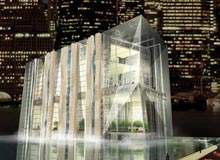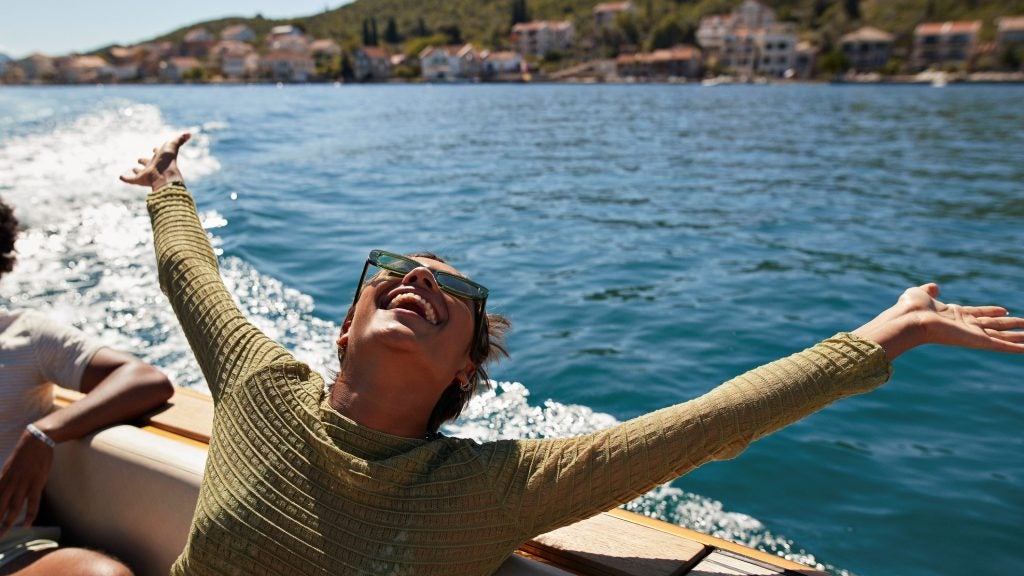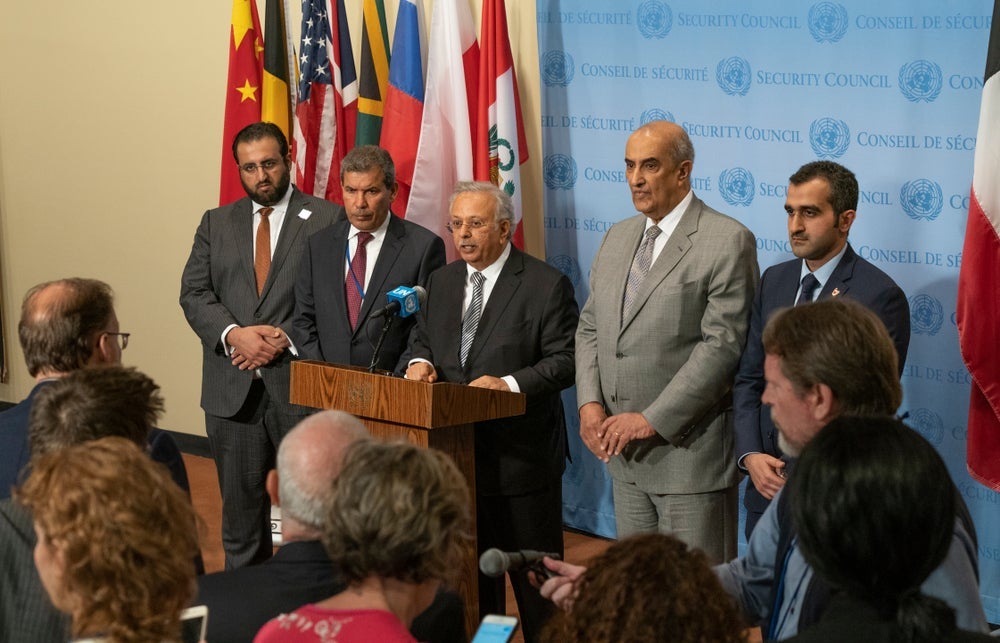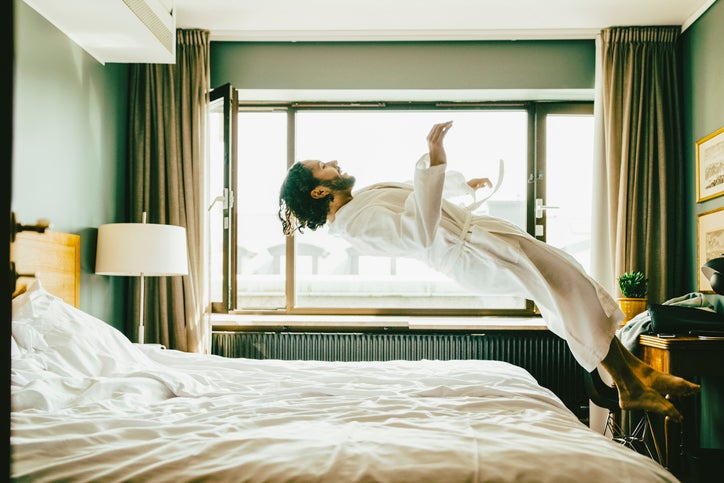
More than 500 architecture students from 24 countries have created their concept of the resort hotel of the future as part of a competition – Hospitality Transformed: Resort Hotels in 2055 – which involved creating their vision of hotels in the age of advanced technology and customised consumer experiences.
The entries varied enormously, from environmentally sensitive resorts in remote locations to sophisticated technological wonders in urban settings.
The students’ vision was inspiring for the competition sponsors, international design firm Wimberly Allison Tong & Goo (WATG), Autodesk and Marriott Vacation Club International.
Ron van Pelt, senior vice president at WATG, was one of the six judges. With WATG recognised as one of the world’s leading architecture firms, and a specialist in hotel and resort planning and design, he was well placed to sort the realistic from the ridiculous.
Van Pelt worked alongside Tom Davis, senior vice president of architecture and construction for Marriott Vacation Club International and Ritz-Carton Club, a recognised leader in the vacation ownership industry.
"We had entries from all over the world which went from the good to the bad to some downright ugly ones, but there were a lot of interesting concepts," says van Pelt.
How well do you really know your competitors?
Access the most comprehensive Company Profiles on the market, powered by GlobalData. Save hours of research. Gain competitive edge.

Thank you!
Your download email will arrive shortly
Not ready to buy yet? Download a free sample
We are confident about the unique quality of our Company Profiles. However, we want you to make the most beneficial decision for your business, so we offer a free sample that you can download by submitting the below form
By GlobalDataHe was looking for entrants that focused on the guests’ experience and comfort and anticipated new technology within the bounds of reality. "It’s all about the guest experience. Some entrants were very clear about how the person staying there would feel and others less so."
Davis agrees that although the competition looked 50 years ahead, the designs needed to be realistic. "Some of these designs were so far forward they were unmarketable."
ADAPTING DESIGNS
Winner Sean Clark, of the University of Cincinnati, captured the future concept of hospitality in his design: CORE (Corporate Resort Experience). He explains: "This is a hotel in which surfaces and structures move according to the way humans do, and is capable of adapting to our changing needs and those of technology."
According to Davis, the design was a winner because it understood that buildings should have the flexibility to adjust to market demands.
Van Pelt adds: "It showed how the hotel is going to be more responsive, and how it will change in size and shape. Sean won because he was able to deliver a very believable proposition that you could see being realised."
The idea of adaptability was picked up by several entries, including a Las Vegas hotel where the rooms changed to reflect the preference of the guest. "You could change the texture of the materials, the colours and have a celestial ceiling at different points of the solar system. You could create any panorama you wanted at the windows or watch a thunderstorm – it was pretty good fun," says van Pelt.
URBAN HIDEAWAY
Another key factor of the winning entry was its location – in an urban setting. The competition tended to focus on two key location trends, according to the judges. The first was the creation of urban resorts and the second offered an escape from cities to remote locations.
Runners-up Lionel Leow and Yanling Tay, of the Delft University of Technology in the Netherlands, championed the theme of urban resorts in their entry, Hotel Archipelago.
They explain: "By 2055, 80% of the planet’s inhabitants will live in the heart of cities. With such a vast number of the world’s population living and working in the polluted cores of their nations, it will be difficult to find any remaining precious pieces of nature. Therefore, the ideal hotel condenses and infuses the ancient luxuries associated with nature into a single spot, right in the heart of the city."
Van Pelt says: "This entrant suggests that future travellers will not have the time to go to a remote destination resort – so why not bring the resort to the city within the physical constraints of an urban site?"
Davis adds: "The second-place entry was a combination of a business and a resort hotel, somewhere you can relax and have leisure time in the same place that you do business. It’s realistic – I think hotels are going to go in that direction. This reflects many of the entries which generally acknowledged population growth and the real influences of urbanisation."
THE GREAT ESCAPE
The second location theme looked at far-flung destinations, removed from the urban environment and self-sufficient.
Ryan Dick, of the University of Illinois at Urbana-Champaign, received an honourable mention for his entry, the Vu’ng Nu’oc Hotel on an island located 3.5 miles off the coast of Halong City in Vietnam. He says: "The destination is without infrastructure, so the hotel is designed to generate its own water and power by excavating the site to act as a dam.
"Timeshare owners are given luxury houseboats that allow them to explore the bay. When the boats are docked at the hotel, they are plugged into the hotel’s systems and are fuelled by the dam."
Davis comments: "The hotel is creative and realistic for 2055 due to its focus on sustainability. As resort destinations around the world become more congested, remote islands like this will become sites for future development. Self-contained and sustainable infrastructure will become increasingly important."
Another notable entry in a remote location was that of Heehyun Nam, of the University of Illinois at Urbana-Champaign, who was nominated Best Autodesk Revit Building Winner for the presentation of his resort hotel in Antarctica 2055. Located under the ice-shelf, it moves with the shelf and is powered by a wind turbine on the surface, giving access to a unique environment.
Nam says his project would educate people about the need for environmental preservation by showcasing the most preserved natural setting on earth.
Another high-tech entry was located in a remote part of Nepal and was suspended from the surrounding environment with no impact on its location.
The ultimate long-shot entry saw guests being shot into space in a pod. After landing they would be picked up at an appointed time by a spaceship and returned to earth while the pod melted into the ground to feed the planet.
Van Pelt remarks: "This was actually where we drew the line because, although this was creative, there was very little chance of it ever being realised."
SUSTAINABLE FUTURE
Wherever the location, there was a sense of environmental awareness and sustainability at the heart of the entries. "Most of the entries had notes about the materials used in construction, non-pollution, solar energy, water recycling and wastewater treatment," says van Pelt.
Davis adds: "This is definitely something realistic because we are getting into it already. We are creating resorts in locations that are so remote there is no power, water, wastewater treatment or food supplies. We are creating buildings where everything you need is supplied from within and you don’t have to leave. This is also important with security becoming a higher priority."
REALISTIC PREDICTIONS
While the needs of the environment are gaining priority, the needs of the guest must remain the number one concern, according to the judges.
"The bottom line is people want to go to places where they are comfortable, the hotel needs to fit in – not just physically but in its sensitivities," says van Pelt. "People tend to predict that the future will be different, but most people don’t want that, most people want something they can relate to."
While advancing technology can offer guests increased comfort, it can also prove too complex and challenging.
Van Pelt says: "When you stretch people from their bodily comforts by using either extremely sophisticated technology or a very different approach then they respond less. People are not interested in being experimented with; they don’t want to feel they need a PhD to turn the lights on in their room."
He adds: "In the future I see technology being used to really make it easier for people to do things, like using voice recognition to switch on lights and turn off the television. There may be personalised presentation, such as digital art which can be altered to suit the taste of the guest or iPods for downloading family photographs. I do think there will be a move to changing the way rooms look."
KEEPING UP WITH THE FUTURE
Communication also has a vital role to play in the future of hotels, an area where new technology is quickly outdated.
Davis says: "It’s amazing how quickly technology turns things upside down. I was building a hotel in Boston in 1998 when fax machines were common so we established a partnership with Innfax to put free faxes in guest rooms. By the time the hotel was completed in 1999, fax machines had become outdated because email was in common use."
For the judges, who plan about ten years ahead, the entries were a catalyst to examine their own views on the future of the industry. They felt the winning entries, both urban hotels, were a good indication of how futuristic issues would be dealt with in the real world.
Van Pelt remarks: "They had both done really good research and I was impressed with that. They had looked at hotels and how they have evolved, and taken into account the influences that have shaped the industry, such as technology, design and guest expectations."
He concludes: "What we learn about the future is often based on what we have learnt from the past."







